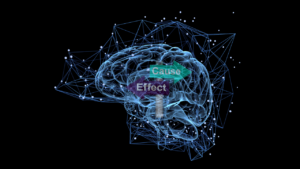According to Sheldon H. Jacobson, a Founder Professor of Computer Science at University of Illinois (Urbana-Champaign), “We live in a data-centric world, with artificial intelligence (AI) as the engine that increasingly drives decision-making.”[1] He adds, “Companies and government agencies all seek to make smarter decisions, often working with incomplete data, to gain competitive advantages. … Data-driven decision-making is the catchphrase of government and industry leaders, and even elected officials who want to sound ‘tech savvy.’ When it comes to data, ‘follow the science’ means ‘follow the ‘data’ science.’ Yet, data of itself is insufficient to make better decisions.”
In order to create value, data needs to be analyzed. Michael Baer, a partner at TechCXO, explains, “Just because you collect data doesn’t make you or your organization ‘data-driven.’ Unfortunately, from what I see, so many companies are data-rich, but insight-poor: Data is in massive supply, but is worthless since it’s not leading to actionable insights. … Data itself is worthless without data science and analysis expertise — plus a hunger for digging into it to leverage it.”[2] On the other hand, Jacobson notes, “Focusing solely on data is akin to only looking in the rearview mirror when driving your vehicle on a busy highway. If you do not concentrate on where you are going, but rather, direct your attention only on where you have been, you are likely to cause an accident.” Decision science can help decision-makers keep their eyes on the road ahead.
Data Science and Decision Science
There are individuals who believe it is necessary to identify differences between data science and decision science. From the opening discussion, however, it should be apparent that the differences are insignificant as far as most decision-makers are concerned. Chris Dowsett, Director of Data Science and Consumer Insights at Spotify, asserts, “For Decision Scientists, the business problem comes first. Analysis follows and is dependent on the question or business decision that needs to be made.”[3] He adds, “The Decision Scientist therefore needs to take a 360 view of the business challenge. They need to consider the type of analysis, visualization methods and behavioral understanding that can help a stakeholder make a specific decision. Decision Scientists need to make insights useable. They need to be able to work with a variety of data sources and inputs — each selected based on its ability to help answer the business question. This means a Decision Scientist needs to have a strong business acumen as well as a robust analytical mind. You cannot have one without the other in a Decision Science role.”
Both data science and decision science draw from a number of fields in order to ensure analytics are both robust and useful. Kiran Kinnera, a Senior Technical Officer in the research lab at CSIR-Indian Institute of Chemical Technology, insists there are four pillars of data science. They are: 1) domain knowledge; 2) math & statistical skills; 3) computer science; and 4) communication & visualization.[4] Mayank Mathur, Academic Director at the ISB Institute of Data Science (IIDS), notes, “The value of data is increasing in decision-making and prediction for various business domains, which is why data science is becoming more significant.”[5] Technology journalist Lisa Morgan adds, “Modern decision intelligence is all about driving better decisions, faster and at scale with the help of AI.”[6]
Enterra Autonomous Decision Science™ (ADS®)
Morgan makes an important point when she discusses the need for faster decisions at scale. She explains, “Time is an important factor because some decisions happen in real-time or near-real-time, and the right data needs to be accessible at all times. This is why decision intelligence platforms are becoming increasingly autonomous.” As I told Morgan, “A lot of Fortune 100 companies are making certain parts of the value chain autonomous — from consumer insights on the front end to revenue growth applications, how to price and promote and [display] your product on a shelf. [They’re] using it to shape demand and manage supply chain complexity during times of uncertainty. … You need to analyze data and then make a decision within a decision cycle so you can take an action when it matters. Often times, having humans do this is too late. By the time humans analyze the data [and] decide to take an action executed within a system, the opportunity to mitigate that risk or exploit that opportunity [has passed].”
As Kinnera noted, decision science draws from the expertise of a number of fields. So does Autonomous Decision Science. ADS is the next step in the journey beyond data science. Using ADS, the machine plays the role of the data scientist or subject matter expert to help optimize a business and help it run at the speed of the marketplace. As a result, organizations can make decisions that take advantage of market opportunities as quickly as possible. I’m proud to note that Enterra Solutions® is leading the way in Autonomous Decision Science; providing data-enabled prescriptive and anticipatory analytics and insights for companies across a broad range of industries. Our approach automates a new way of problem-solving and decision-making, going beyond advanced analytics to understand data, perform analytics, generate insights, answer queries, and make decisions at the speed of the market. This powerful capability uniquely enables “End-to-End Value Chain Optimization and Decision-Making” at scale and allows clients to uncover and understand the inter-relationships that lead to innovative new product development and innovation, heightened consumer understanding and targeted marketing, revenue growth tactics, and intelligent demand and supply-chain planning. Or, as Professor Jacobson might say it, ADS helps enterprises keep their eyes on the road ahead.
Concluding Thoughts
Baer reports, “More data has been produced in the past two years than the prior history of humanity. And with the impending deprecation of the third-party cookie, the race to collect data will only accelerate. So, now’s the time to pivot to become a truly data-driven organization — by demanding that the data you collect begins driving the insights and actions your business needs.” Morgan adds, “Decision intelligence software lets organizations make more precise decisions at an enterprise level to enable faster and more informed decision-making.” Mark Farkas, Chief Technology Officer at Aifleet, told Morgan, “DI [Decision intelligence] transforms human knowledge into corporate knowledge, which allows organizations to detach their scaling from the ability to attract, motivate and integrate a large pool of experts. DI, and software in general, will completely transform how we humans work and deliver value in organizations.”
Footnotes
[1] Sheldon H. Jacobson, “The AI advantage in decision-making,” The Hill, 17 January 2023.
[2] Michael Baer, “Data-Rich, But Insight-Poor,” The Marketing Insider, 1 March 2023.
[3] Chris Dowsett, “Data Science vs Decision Science,” Towards Data Science, 24 January 2019 (out of print).
[4] Kiran Kinnera, “4 Pillars of Data Science,” Kaggle, September 2022.
[5] Mayank Mathur, “Data Science and its importance in the business world,” Dataquest India, 18 January 2023.
[6] Lisa Morgan, “Decision intelligence changes operations across industries,” TechTarget, 23 January 2023.





